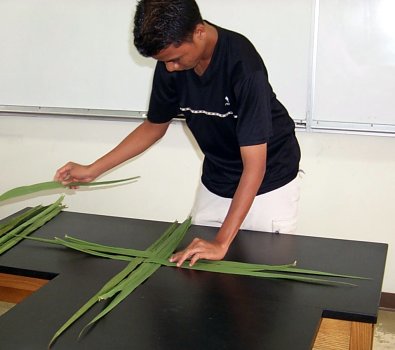
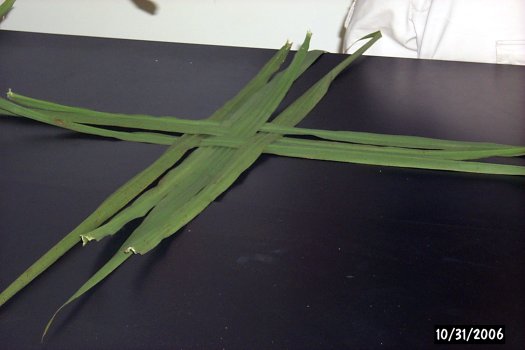
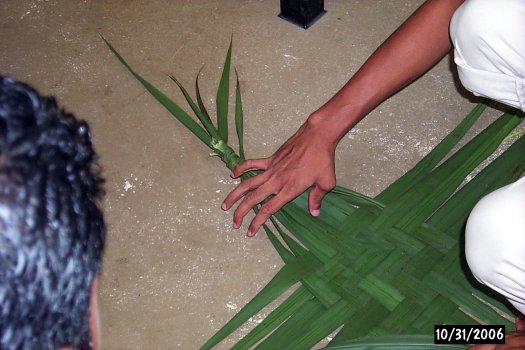
Koraens make a special basket, fuhsranyac to hold Kosraen fahfah for special occasions.



Hellen does a show and tell using a Mortlockese saipo (fan). The fan is made of palm leaves except for the edging which is pandanus leaves.
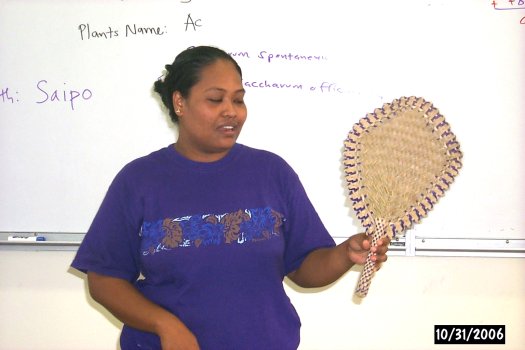
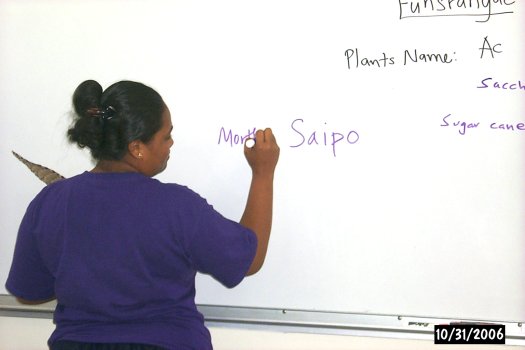
Cenileen of Kitti, Pohnpei explains the materials used in a local purse called a kopwou. The body of the purse is made of coconut leaves (Cocos nucifera), the wood sticks at the top are koatiou (Northern variant: ketieu; Ixora spp.), and the stap is braided kohlo outer bark (Hibiscus tiliaceus).
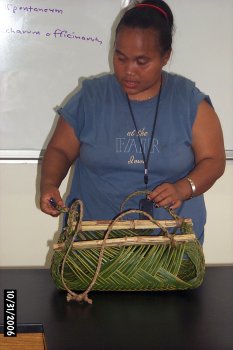
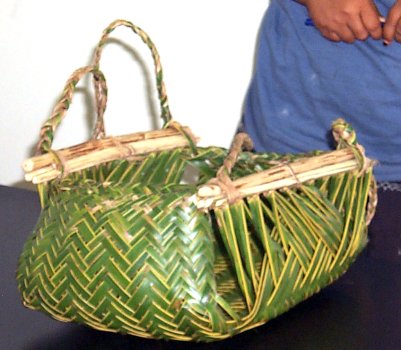
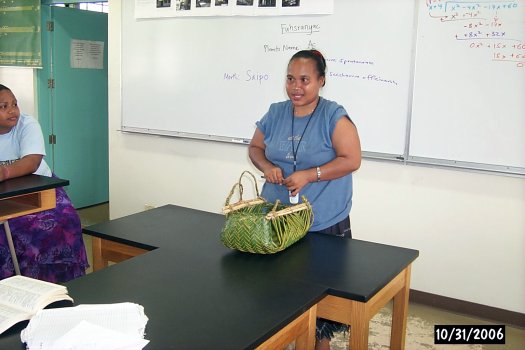
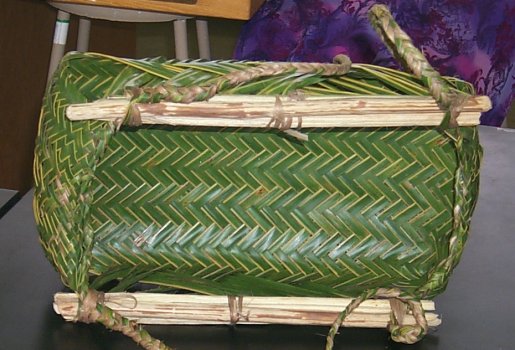
Katherine shows a Mwoakillese kiam made from coconut leaves. This is a general purpose basket for a wide variety of uses. Note that Pohnpeians refer to this style as a pwaht and reserve the term kiam to a different style of basket. Students from southern Noumeneas noted the similarity to a basket used in their islands to hold breadfruit.
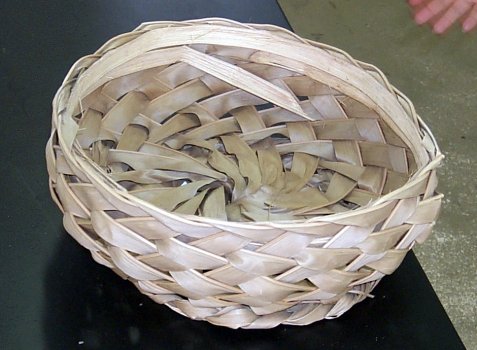
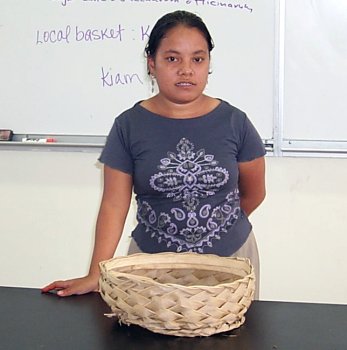
Billy presented briefly on the major plant components of a Pohnpeian canoe. The hull is made of the trunk of sadak (Elaeocarpus carolinensis), mahi (Artocarpus altilis; breadfruit), or dohng (Campnosperma brevipetiolata). The upper part of the hull (running board?) is made of a lighter wood such as keleu (Hibiscus tiliaceus).
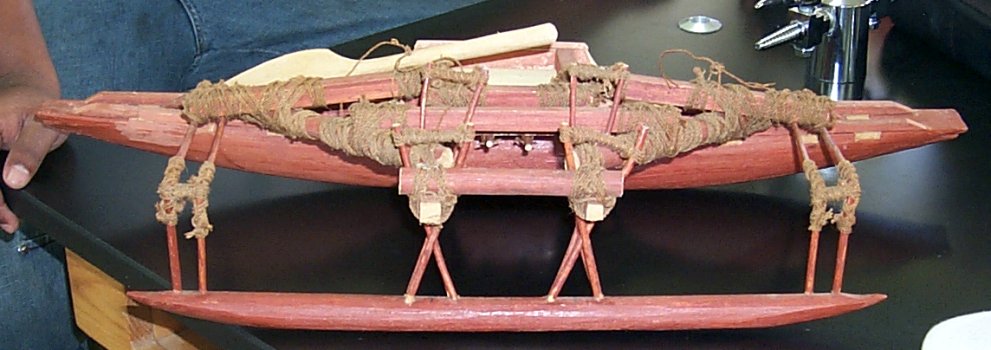
The float or pontoon is also made from keleu, the struts are typically ketieu (Ixora casei) stems.
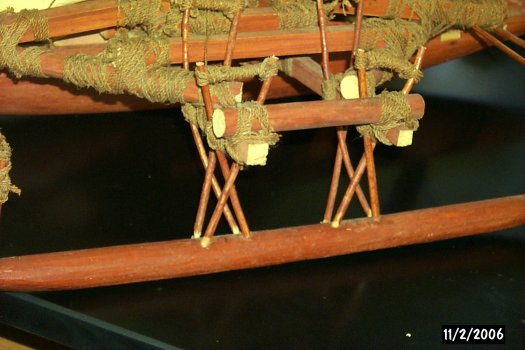
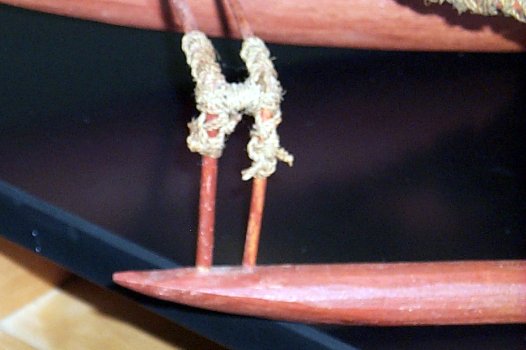
Qulihter demonstrated the use of a breadfruit leaf as a local fan, toahnihr by her spelling and that of Kitti under their constitution, but used a green leaf rather than a dry, brown leaf as is the actual custom across Micronesia.

Jackson wove a basket. Baskets are generically called shiuge on Woleai with this particular style being termed a guiwam. The sound of the word is quite similar to the Pohnpeian word kiam, which is illustrated further below by Hundra. The guiwam is made from a coconut palm leaf.
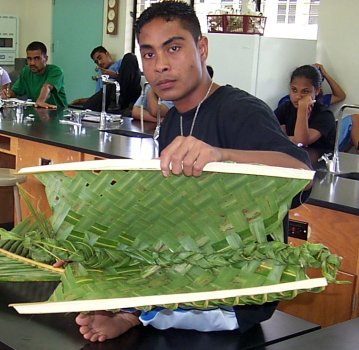
A key feature difference from a Pohnpeian style kiam is the folding back of frondlets at the left and right edges. This shortens and deepens the guiwam for a given length of palm frond.
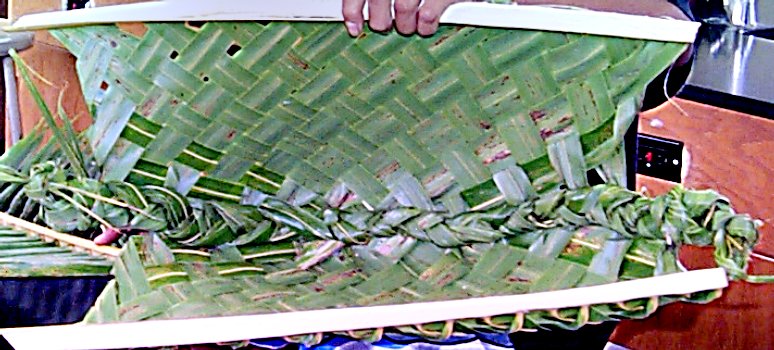
Jackson from Woleai and Hundra from Kitti do a show and tell compare and contrast of the guiwam and kiam.
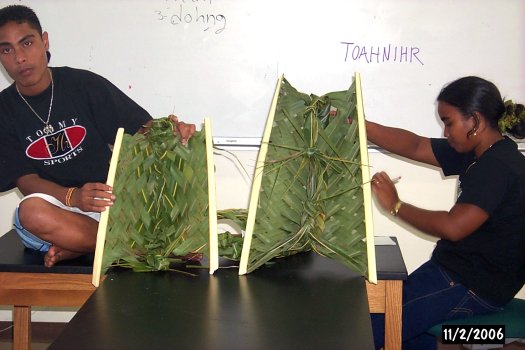
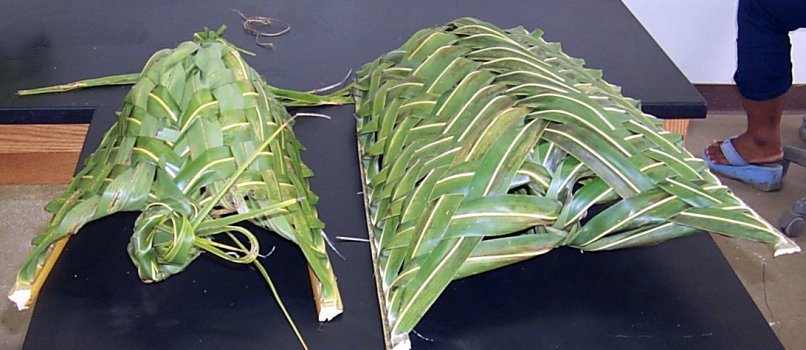
Daisy gave a presentation on the tepwanu masks of Chuuk. These masks are not worn, but rather are put on posts around a home or village. The masks protect the home or village. Translating the nature of the threat is not fully possible, the closest translations might be "evil spirits" or "malevolent ghosts."
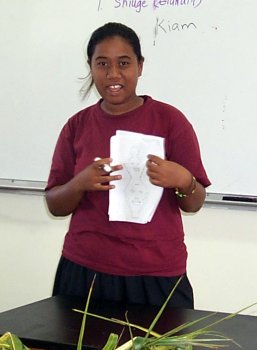

Bloomy brought an exceptionally valuable cultural item, a gulfoy from Ulithi. The gulfoy is woven from hibiscus and takes as a long as a year to complete. The gulfoy should not be confused with the more commonly seen and worn outer island skirts made of modern textiles.
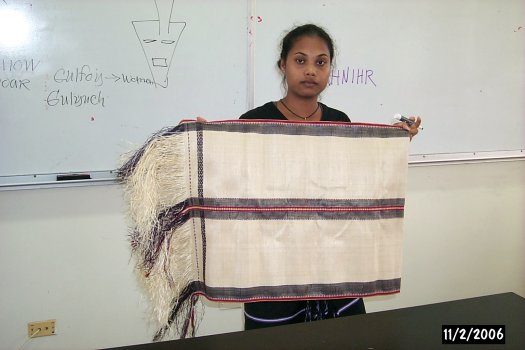
As a acknowledgement that a girl has become a woman, the sisters of the father of a girl will make a gulfoy for her. The gulfoy is also used as a gift with special significance, often being presented by outer islands to the chiefs of Yap proper. The gulfoy can also be used to wrap a body prior to burial. Another use is the presenting of one or more gulfoy when one family seeks forgiveness from another.
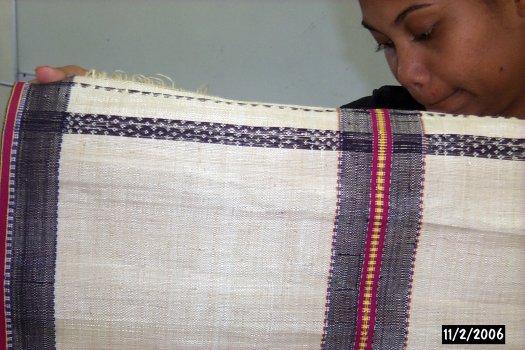
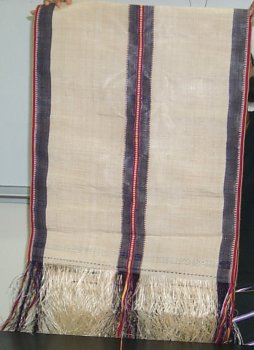
The men of Ulithi wear a gulynch (not shown here) that is black and white in color, longer, not as wide, and woven from banana fiber. Both the gulfoy and gulynch are also seen as signs of wealth. To have many is to be wealthy.
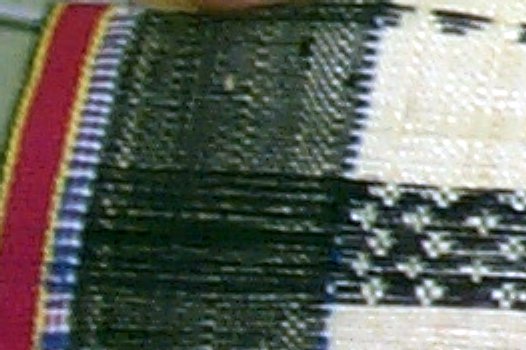
The patterns are created by the coloring of the individual hibiscus strands, hence producing the patterns seen in the band require a mastery of complex weaving patterns. The gulfoy is also refered to as a gow apparently depending on the situtation and grammar.
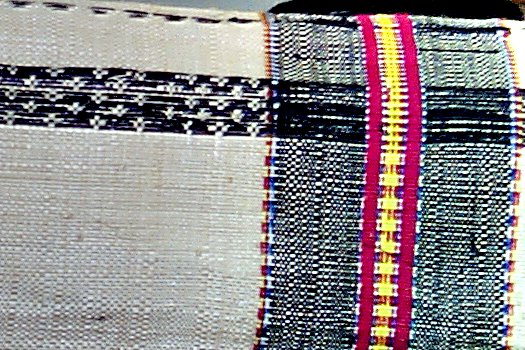
Once a young woman has a gulfoy, she was traditionally considered ready to marriage. Receiving a gulfoy was a mark of coming of age for a young woman.

Marciano demonstrated the technique for interleaving breadfruit leaves to hold pounded breadfruit in Chuuk.

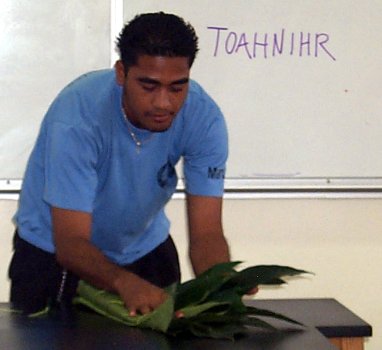
Alexander showed a Pohnpeian peinar used to pound breadfruit in order the make the disk Pohnpeians call lihli.
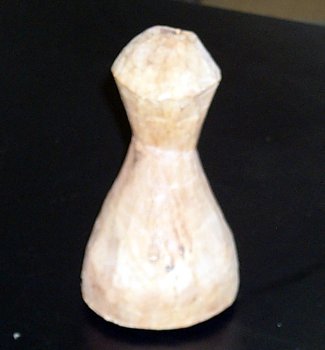
The use of a wood pounder to pound breadfruit on a stone slab was contrasted with the next presentation where stone pounder is used to pound soft taro on a wood slab.
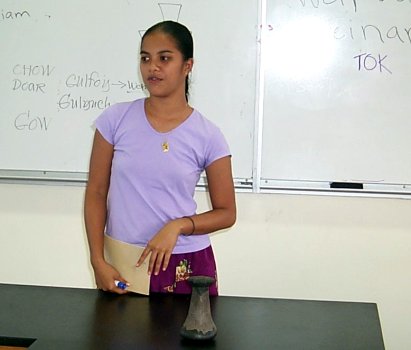
MaryRuth of Kosrae brought in a tok made of basalt rock, hand-hewn until smooth. The tok is used to pound Kosraen fahfah. Fahfah is made from soft taro. The same stone seen above was used the next day at a cultural display where fahfah was actually produced.
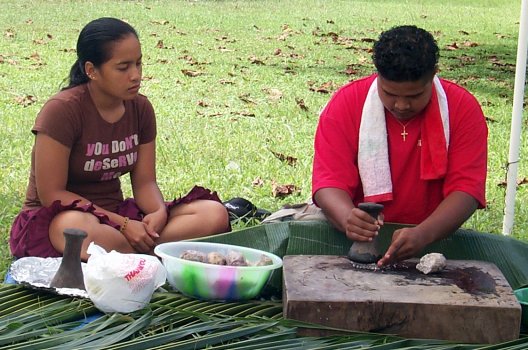
Ethnoherb • Ethnobotany • Lee Ling • COMFSM